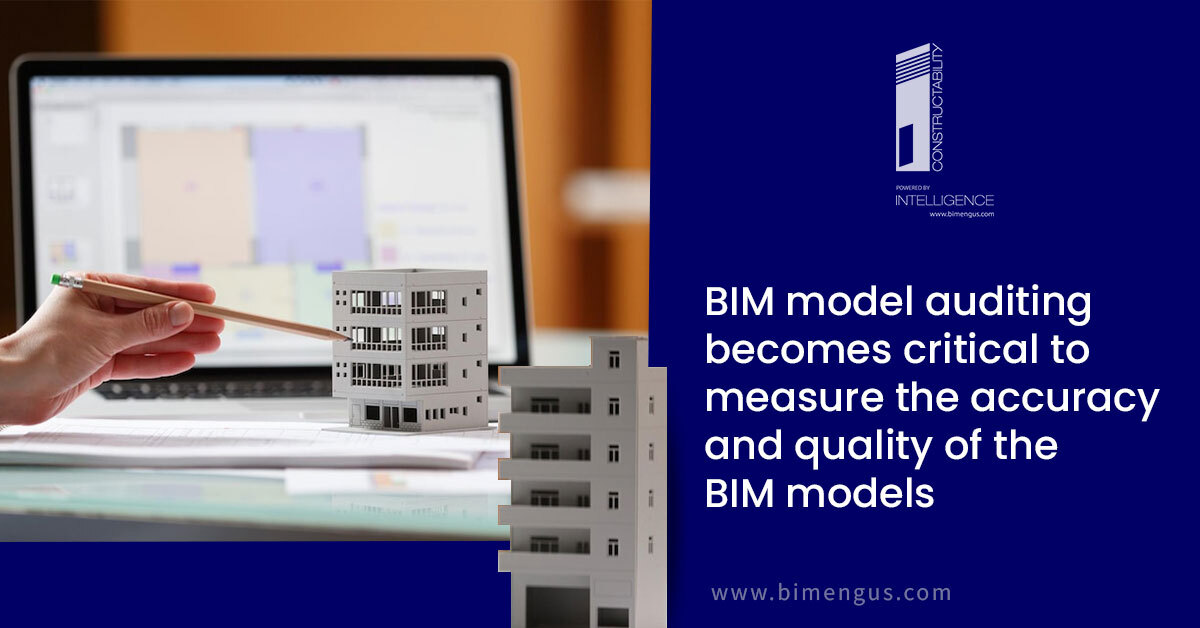Building Information Modeling, commonly known as BIM, is a rapidly growing trend in the construction industry that has gained popularity in recent years. BIM has transformed how construction projects are executed by facilitating the creation of digital models that can simulate the real-life behavior of buildings, bridges, and other civil infrastructure. However, the use of BIM in the construction industry also raises concerns regarding quality and accuracy, which can have significant impacts on the outcome of a project. This is where BIM model auditing becomes critical.
BIM model auditing is the process of reviewing, assessing, and verifying the quality, accuracy, and completeness of BIM models created during the design and construction phases of a project. This process ensures that the BIM models meet the project requirements and adhere to industry standards and best practices. The importance of BIM model auditing cannot be overstated, as it helps to identify errors, inconsistencies, and potential problems that can impact the construction process and the outcome of a project.
In this blog post, we will discuss the importance of BIM model auditing and its benefits in ensuring the successful execution of construction projects.
- Quality Control
BIM model auditing ensures that the quality of the digital models is up to par with the standards required for a specific project. This process helps to identify any discrepancies in the model that could lead to costly mistakes down the line. By reviewing the model, errors and omissions can be detected and corrected before construction begins. This way, potential issues can be addressed on time, thus saving time, money, and resources.
- Risk Mitigation
The use of BIM modeling is a vital step in risk management in construction projects. By reviewing and auditing the BIM model, potential risks can be identified and mitigated in advance. For example, identifying potential clashes between building systems, equipment, or other elements can be detected during the design phase, reducing the chances of costly rework during the construction phase.
- Compliance with Standards
BIM model auditing ensures that the models adhere to industry standards and best practices. This process helps to ensure that the models meet the requirements of clients, stakeholders, and regulatory bodies. By following the standards, construction firms can avoid penalties, litigation, and other consequences that may arise due to non-compliance.
- Collaboration
BIM models allow for better collaboration among team members involved in the project. By auditing the model, potential issues can be addressed and resolved before construction begins. This fosters better communication and collaboration between all parties involved, reducing the chances of errors, conflicts, and delays.
- Optimization
BIM model auditing can help optimize the construction process by identifying potential inefficiencies and opportunities for improvement. This can result in cost savings and improved productivity, as the construction process can be streamlined and optimized based on the findings from the audit.
In conclusion,
BIM model auditing is a critical step in ensuring the success of construction projects. By reviewing and assessing the digital models, potential errors and risks can be detected and corrected before construction begins. This process helps to ensure compliance with industry standards and best practices, reduce the chances of conflicts and delays, and optimize the construction process. As the construction industry continues to adopt BIM modeling, BIM model auditing will become increasingly important in ensuring the quality and accuracy of digital models.
Visit Us: www.bimengus.com
